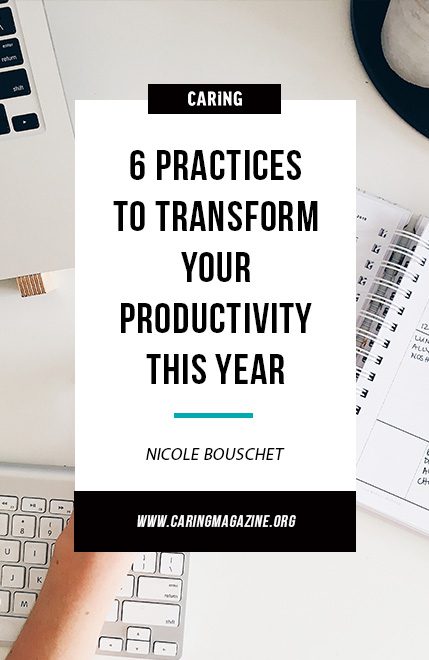Being productive and efficient with our time is likely at the top of our goals. We want to get things done faster and better. But we’re also in a distracting environment where we have push notifications pleading for our attention and the whole world wide web at the touch of our fingertips. Our brains are overstimulated, and it can be tough to find a practice that makes getting stuff done simpler.
Here are six practices that might be right for you depending on your current productivity road block.
Using the Pomodoro Technique
If you have a difficult time finding focus, the Pomodoro Technique is for you.
This productivity method was created by an Italian entrepreneur in the 1990s named Francesco Cirillo, who named it after his tomato themed timer (“pomodoro” means tomato in Italian.) The idea behind it is to work on a specific task without distractions in sprints. You set your timer (an alarm on your phone will do) for 25 minutes of work and after it goes off, you take a five minute break before setting the timer again for another 25.
You have a break to look forward to so the task feels less overwhelming. You’re more likely to concentrate fully on one task without flipping back and forth between tabs in your browser.
Feel free to revise the method based on how it works for you. Sometimes the timer can go off when you’re immersed in work and it’s more effective to keep working without a break. And then maybe you take a 10-minute break after a second round instead. Play with it and see what works for you.
Write down every time you’ve completed a set, so you can keep score on how many pomodoros you can do throughout the day. Everybody likes a challenge, right?
Bullet journaling
If you have way too many unused notebooks bought with good intentions, try using the bullet journal system.
It’s a popular planning system where you have one notebook dedicated to everything you need to write down: outlining your days, writing notes, keeping track of dates, making lists, etc.
Your bullet journal can be as fancy or basic as you want it to be. The idea behind it is to simplify your life and create your own individual planner without having 20 separate notebooks and planners to fit all your organizational needs.
You keep it all organized by creating an index page in the front that you’ll keep up with, so you can easily flip through and locate all your pages.
Time blocking
If you constantly feel like there isn’t enough time in the day to get what you want done, go for time blocking.
There are so many times where we think of life-changing goals we want to accomplish and then we don’t follow through because we can’t figure out when we can make time in our schedule for them. Time blocking is a system that ensures that you always create space for what you want to do, because you build it into your day. You designate each hour or block of time with a purpose.
Start by taking a look at your schedule. How are you currently spending your time? Start breaking your days down by the hour, and see what you can cut out and what you have open. Eliminate the unnecessary and create space for what you desire to do.

Batching
If you have a lot of similar tasks to get done, batching could be your thing.
Batching tasks means getting likeminded tasks done at the same time. It allows you to be prepared in advance, and efficient when getting things done. If you are writing a blog post for example, you might decide to do three or four blog posts at one time instead of a single blog.
Instead of spreading out tasks throughout the week or months, you get them done in one sitting. Instead of answering emails throughout the day, you can dedicate one or two times a day to answer all emails. Think about tasks that you do over and over again throughout the month. Can you get them done at one time instead?
Morning brain dumping
If you’re overwhelmed, start your day with brain dumping.
In the beginning of the day, we often have a lot on our mind: what we’re going to wear, what we need to do that day, what we’re going to eat, what we need to remember to bring, and on and on.
Writing down every single thing you need to do that day or week can help you purge your thoughts and start the day off fresh.
Following the one-minute rule
If you’re often procrastinating, make the one-minute rule a habit.
Ask yourself, can I get this task done in 60 seconds or less? When the answer is yes, don’t procrastinate—do it right then. When the answer is no, save it for later when you have more time to dedicate.
We often procrastinate on mundane tasks, because we’re not in the mood to do them or they pop up unexpectedly, but some of those tasks are so minuscule that it’s more inconvenient not to do them right then.
For example, after eating your morning cereal, you wash your bowl immediately. If you get an email invite you need to accept, you do it right then. There’s no use in adding extra stuff to your to do list when you can complete it in under a minute.














